If you are wondering how to stop air from leaking around a door or window, you are not alone.
During the cold season, many people experience cold air and draft getting into the house from outside.
The cold air usually leaks through small openings like cracks and gaps around windows and doors.
There are several ways through which you can check for air leaks or air drafts in the house. However, in this article, we shall particularly focus on air leaks around doors and how you can draft-proof them.
How to stop air from leaking around a door
Placing a door draft stopper is the most effective way to stop air from leaking around a door. These provide immediate relief from the issue while you look around for a more “permanent” fixture for the problem. Investing in a high-quality draft stopper can create a barrier and prevent the entry of the air through the door.
Luckily, there are several ways to check for air leaks as discussed below.
1. If You Can See Daylight
To check for air leaks, close all the doors and windows and make sure the room is completely dark.
You can add heavy blackout curtains to make the room pitch dark. Check to see whether there is light coming in under the door or on the sides and around the windows.
If you notice any spaces where light is coming in, then air is coming in as well.
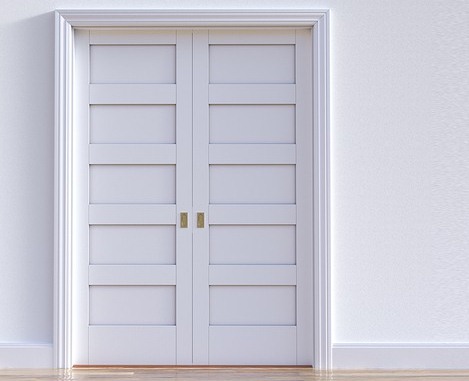
2. If the Caulking is Worn Out
Caulking is done to seal off and fill cracks and joints around doors and windows.
At times the caulk may come off leaving behind gaps and cracks where cold air can pass through.
So check to see if the caulk is still intact especially around the door frame. Then apply a new layer of caulk where necessary to seal off the cracks.
3. Using an Infrared Thermal Leak Detector
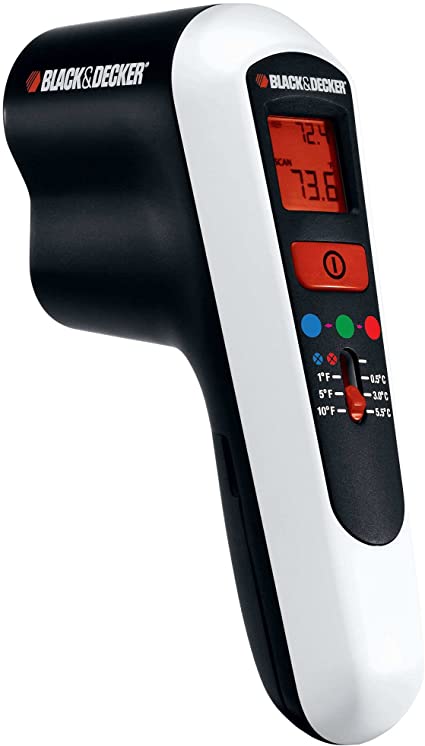

This is another simple air leak test where you can simply use an infrared thermometer to detect power-draining drafts around the house.
Several thermal leak detectors can be used for this purpose but the most common one is the BLACK + DECKER Thermal leak detector.
It is used to measure the surface temperature within the specified ranges for home and it is not appropriate for use on people or animals.
Moreover, it comes with a 5-step guide for fixing basic energy leaks around the house.
Other than cold drought, this thermal leak detector can also be used to identify hot or warm droughts. The blue light indicates a cold drought while the red light indicates warm droughts.
4. Using a Smoke Test
A simple smoke test can help you check for air leaks in your house.
First, before starting this test, turn off all combustion appliances like gas burning furnaces and ensure that the windows and doors are tightly closed.
For best and accurate results, suck all the air out of the room using an exhaust fan or a large window fan.
Once you are sure that there is no air in the room, light a candle or incense stick, and pass it under the door or around the edges of the window.
If smoke is blown into the room or sucked out, it is a clear indication that there are drafts or air leaks. If it remains uninterrupted then there is no air leak.
See also: Best heater for uninsulated garage
4 Ways on How to Stop Air from Leaking Around a Door
The moment you detect air leaks, you should think of ways to address them as early as possible.
This will help you to save on the cost of the energy bill, which you incur as you try to heat and cool your house.
So, let’s look at some practical ways you can keep air out of the house during the cold season.
1. Place a Door Draft Stopper
Door draft stoppers are recommended for immediate and short term relief from cold air
Placing a draft stopper at the inner base of the drafty door creates a barrier between the interior of your home and chilly drafts.

Other than drafts, they also help to minimize noise from outside.
The stoppers are made from different materials such as fabric, silicone, Styrofoam, or plastic.
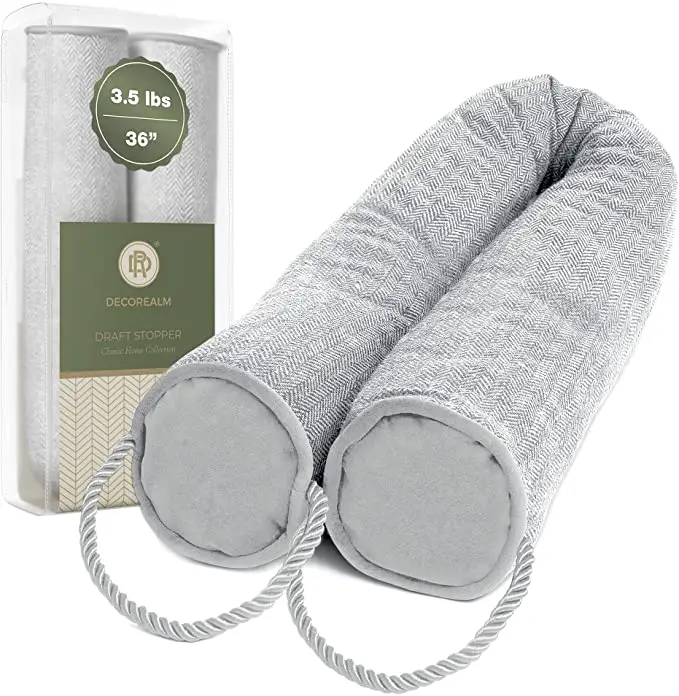

This DECOREALM Door Draft Stopper is made from a weighted weatherproof fabric that helps to keep out cold and heat in the summer. It also works as a noise blocker to minimize noise from outside.
2. Use Weather Strips and Door Sweeps
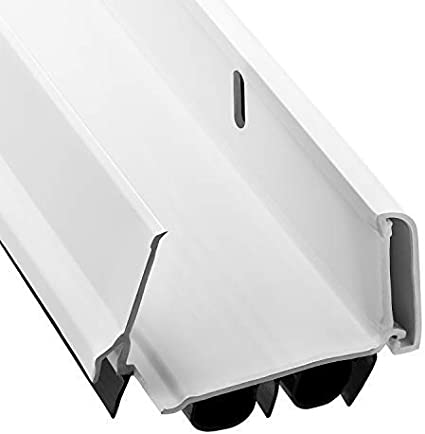

Weatherstripping refers to the process of applying weather strips to a door or window in order to prevent elements like air, rain, or draft from getting into the house.
It also helps to reduce electricity bills, minimize noise, and make the house more comfortable.
The materials used in the sealing process around windows and doors are known as weather strips or door sweeps.
They are made from different materials such as polyfoam, rubber, felt, vinyl or vinyl tubing, and metals like aluminum and brass.
There are different types of weather strips but the most durable ones are compression weather strips.
They are ideal for windows sashes and swinging doors and are made from rigid vinyl, wood, or aluminum with a flexible vinyl bulb along one side.
A good example of a compression weatherstrip is this KS Hardware Double Bubble Door Sweep which comes 32, 36, and 42 inches.
However, it can be adjusted up to 7/8” to ensure a perfect seal. Also, it has drip caps that help to divert water away from the entrance.
See also: Best weather stripping for old doors
3. Use Sticky Foam Tape
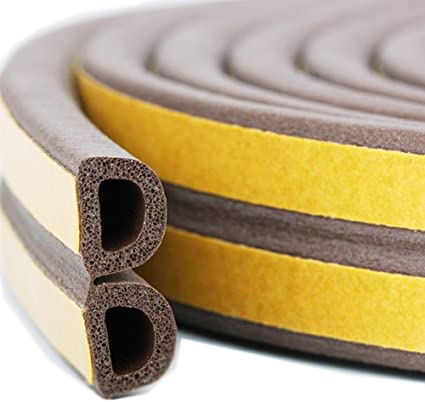

Sticky foam tape can be used to seal doors and windows and other gaps and cracks around the house.
The tape such as this PRUGNA 33Ft Door Seal has adhesive on one side that secures it to the door or window. Hence, it is very easy to install.
All you need to do to purchase the tape and cut it as per the size of your door and then stick it. Ensure the surface is clean before sticking the tape.

This is however not a long-lasting solution since the adhesive tends to wear off after a while and may need to be replaced. You can use staples to make it stay on for longer.
4. Recaulk Your Doors
As earlier stated, caulk may start to wear out after some time so you may need to recaulk around windows and doors.

Recaulking is best suited for cracks that are less than ¼ inches wide.
It is a simple DIY process and all you need a tube of exterior caulk. The best caulk to seal your door is silicon since it is easy to apply, less expensive, and it retains flexibility.
You can go for a clear caulk or one that you can paint on to conceal it.
Before you recaulk, remove loose paint and old caulk and then use a damp rug to clean the surface and remove dust. Make sure the surface is completely dry before applying the caulk.
Apply caulk on the crack you want to seal using a caulk gun to trigger the pressure. It will take about 24 hours to cure completely.
Always read the label instruction to make sure that the caulk is okay for the door material to be sealed.
Conclusion
Air leaks not only make the house uncomfortable but also increase power bills.
That is why we have explained the different ways you can check for air leaks at home and how to stop air from leaking around a door.
You can apply any of the methods that you prefer but make sure it does a perfect job of sealing your house from drafts and cold air.